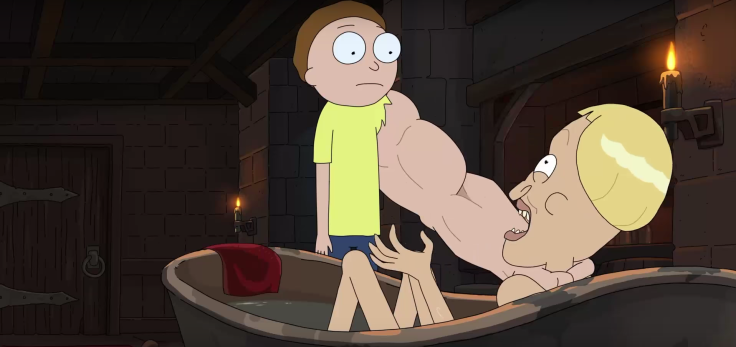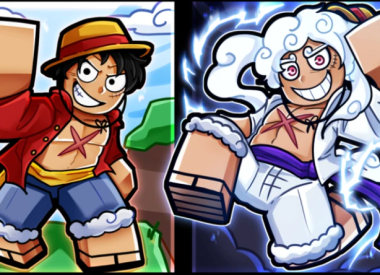Though it’s hard to imagine two more different television shows, the most recent episodes of Game of Thrones and Rick and Morty overlapped with two surprisingly similar scenes, each of which reveals their show’s attitudes toward power, the arc of history and killing rich people. (Spoilers ahead for both of these shows, if you aren’t caught up.)
Olenna Tyrell had a gentle death in the latest episode of Game of Thrones, after Jaime Lannister and his troops captured Highgarden. The Tyrell matriarch, who lost her family when Queen Cersei blew up Baelor’s Sept, submitted to a painless death by poison, rather than be subjected to the tortures Cersei had planned for her. Olenna’s death is not just dignified, but portrayed as the culmination of a continent-wide chess match of sorts. Her death isn’t portrayed as unjust, but as the inevitable conclusion of an ongoing tactical battle for control of Westeros. She even ekes out a win of sorts, using her last living moments to reveal her conspiracy to murder King Joffrey, thus setting in motion a chain of events that resulted in the deaths of all three Lannister children and effectively unsettling Jaime, perhaps planting the seed of a betrayal against his increasingly sadistic sister.
Less gentle was the death by drowning a Lannister-ish lord suffered in the latest episode of Rick and Morty. Strangled by an avenging arm named Armothy (it’s complicated), the unnamed lord dies after making excuses for the suffering he’s dished out in his pursuit of power and riches. “Please! Slavery was a family business, I didn’t ask to be born into it!” he whines. “If anything, I’m the victim here.”
Both murders are political upsets, but with vastly different antecedents. The death of Olenna Tyrell is the end of her maneuverings amongst the elite, ultimately attributable to the failure of the coalition of power she selected. By siding with Daenerys, she fell victim to Cersei and Jaime, with additional elite-steered factors setting the ground conditions, including Euron’s defeat of Yara’s fleet and Cersei’s destruction of the Sept of Baelor.
The game of thrones is played among the elite, whose armies are nothing more than weapons in a battle of wit and guts between an aristocracy small enough to fit on a school bus. Like its source material, George R.R. Martin’s A Song of Ice and Fire series of novels, Game of Thrones’ theory of power goes beyond even The Power Elite model described by sociologist C. Wright Mills, which describes American society as under the rule of an oligarchical upper crust of military, economic and corporate bigwigs. With its super-powered lords and ladies, fire god Chosen Ones and dragon-birthing, fireproof queens, Game of Thrones comes closer to a divine right theory of power, where fights for control conclude with a god-selected victor seated on the Iron Throne. Power attaches to great individuals like Olenna Tyrell, and can only be acquired by other great men and women, who accrue that power to themselves.
But Game of Thrones, like Rick and Morty, also believes in the power of tradition and structural institutions. In Game of Thrones, forces like the Iron Bank of Braavos and the slave lords of Meereen put pluralistic pressure on the elite government, but are ultimately crushed or overcome by the hero figures who are really steering history. Rick and Morty is different. The elite are all middle managers (of power they’ve inherited) or a priest-class of sorts — stewards of powerful, dogmatic institutional illusions.
Rick and Morty has a much more capricious approach to power, embodied in the whims of an old alcoholic. In the first episode of Season 3, Rick destroys both the Citadel of Ricks and the Galactic Federation government. Both are massive, galaxy-spanning institutions of power, but there’s no indication that the Council of Ricks or the Galactic Federation president are anything more than incidental figures, ceremonially embodying that power. The Federation is toppled when Rick devalues their currency, popping with a keystroke the abiding economic illusion around which a massive empire is managed.
But doesn’t that just make Rick the new power in the universe? And Rick and Morty an even more extreme example of power accruing to individuals of historic destiny? Armothy’s murder of the ruling class slaver in the second episode of Season 3, “Rickmancing the Stone,” points to a different interpretation. On rare occasions, such as killing the Council of Ricks or bringing the universe inside his car battery to heel, Rick uses his power to shape the arc of history. But since he has no abiding ambition (aside from McNugget sauce), no ideology and no patience for leadership (he can’t even keep a retail storefront open), Rick typically works as the catalyst for change, rather than its motive force. He pops up in a universe, disrupts it with his cataclysmic indifference, and never looks back, leaving the creation of new history to whoever cares to pick up the pieces. In Armothy’s case, it was Rick’s attempt to steal a hunk of Isotope-322 that set in motion a chain of events that allowed for Armothy to overthrow the oppressive ruling class.
This isn’t the first time that Rick has incidentally provided the means for class upheaval and power redistribution independent of individual heroes. In Season 2 episode “Look Who’s Purging Now,” Rick even articulates this more rootless theory of power, in which individual people are largely secondary. “Here’s the deal, I’m not here to judge, I’m just a guy from another planet,” Rick tells the rich upper class of cat people on an alien world. “But this girl is one of your poor people and I guess you guys felt like it was okay to subject her to inhuman conditions, because there was no chance of it ever hurting you. It’s sort of the sociopolitical equivalent of, let’s say, a suit of power armor around you.”
Arthricia, plucked at random from her planet’s lower classes, slaughters the upper class in the power armor Rick provides her, making literal a theory of power that’s far more situational than personal — a combination of Marxist class struggle and privilege discourse that has nothing to do with heroes. At the end of “Look Who’s Purging Now,” the cat people of the former purge planet attempt to rebuild society, rediscovering almost immediately bureaucratic institutions like banking and administration where power accrues. Rick was only the force of nature that brought the peaks low and raised up the valleys.
In Armothy’s case, both the lower class and upper class are almost completely abstracted. The lower class is simply the super-muscular, vengeful arm of a woodchopper: the perfect visual representation for a class consciousness awakening to its own power, in response to the surplus value stolen from it by a useless upper class. The upper class, appropriately enough, is embodied in an unnamed slaver with a blonde bowl cut and a suspicious resemblance to the lifestyle and aspect of Westeros’ ruling Lannisters. In this Rick and Morty makes an effective critique of the theory of power and history ensouled in Game of Thrones. Armothy and Arthricia would be victims in Game of Thrones — at best bones for Sandor Clegane to feel guilty about. But sometimes the existing order isn’t overthrown by powerful families steering world events. Sometimes the great mass of people can’t be reduced to incidental rabble or mechanized armies. Sometimes the existing order is drowned in the bathtub by the disembodied arm of a pissed-off woodcutter.



















